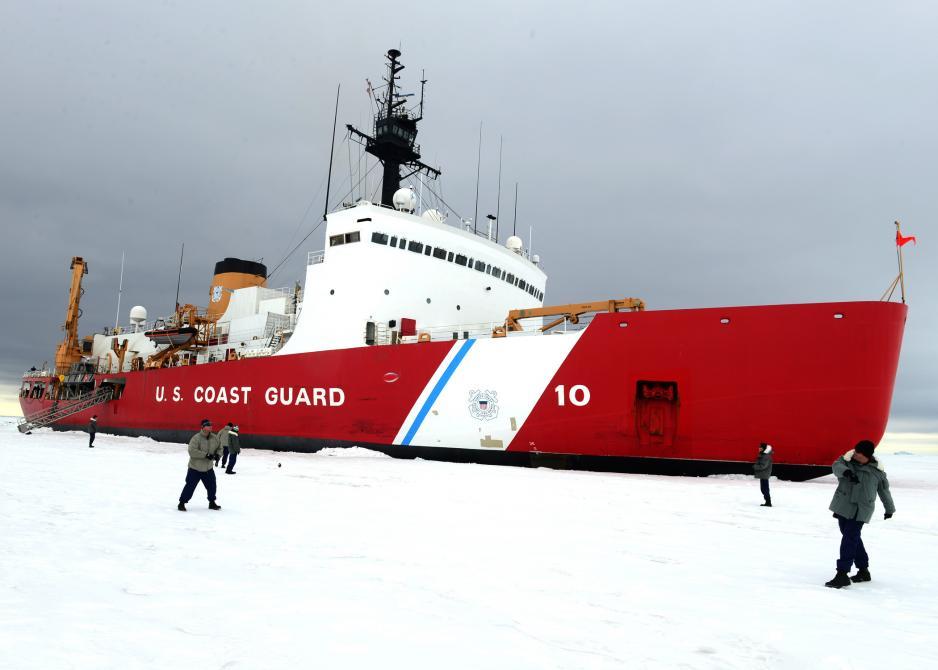Strategic competition in focus in US Coast Guard Arctic strategy

Photo: USCGC Polar Star is a heavy icebreaker, commissioned in 1976. It is currently one out of three of the U.S.’ operating icebreakers (Photo: Coast Guard News/Creative Commons).
The United States Coast Guard’s new Arctic strategy sees Russia and China as possible challengers to the continued peaceful stability of the Arctic region.
The US Coast Guard released its updated Arctic Strategic Outlook last week and one of the main focus areas is increased competition in the Arctic region. This strategic outlook is the 2nd of the kind for the US Coast Guard and is an update of the 2013 Arctic Strategic Outlook.
”The Coast Guard is committed to continued cooperation in the Arctic, but recognizes the shift toward global competition”, says Barry Lane, Chief Warrant Officer in the US Coast Guard to High North News.
‘Our 2019 Arctic Strategic Outlook builds off the 2013 strategy and reaffirms our commitment to American leadership in the region through partnership, unity of effort, and continuous innovation’, adds CWO Barry Lane.
Read also: What the new US Coast Guard Strategy tells us about the Arctic anno 2019
The Arctic as a strategically competitive space
The 2019 strategy’s language and focus is different from the 2013 document While the 2013 strategy focused on safe, secure and environmentally responsible maritime activities, the new strategic outlook puts emphasis on the geopolitical and strategic role of the region.
Since 2013, “the resurgence of nation-state competition has coincided with dramatic changes in the physical environment of the Arctic, which has elevated the region’s prominence as a strategically competitive space”, states the updated strategy.
According to CWO Barry Lane, the strategic environment in the Arctic has changed since 2013: “the polar regions are no longer emerging frontiers, but contemporary national security issues”, says Lane.
Russia and China as strategic competitors in the Arctic
Russia and China are identified as the US’ main competitors in the region, both because of their investments and activities in the Arctic and their actions elsewhere in the world.
“Russia and China’s persistent challenges to the rules-based international order around the globe cause concern of similar infringement to the continued peaceful stability of the Arctic region”, states the strategy.
China considers itself a ”near-Arctic” state and is investing in icebreakers, research vessels and infrastructure in the region. According to the strategy, “China’s attempts to expand its influence could impede U.S. access and freedom of navigation in the Arctic as similar attempts have been made to impede U.S. access to the South China Sea”.
Read also: Expert: No icebreaker race with Russia in the Arctic
While recognizing that Russia has legitimate sovereign interests in the region, the strategy underlines that the U.S. must take heed of Russia’s actions elsewhere in the world and the potential dual-use of its capabilities in the Arctic.
CWO Barry Lane says to High North News that the Coast Guard recognizes the shift toward global competition, particularly with Russia and China.
“The Coast Guard is our nation’s most visible, agile, and adaptive force available to uphold U.S. sovereignty, represent national interests, and vigorously compete for advantage in the region”, Lane states.
Competition need not lead to conflict
But competition need not lead to conflict, states the Commandant of the US Coast Guard Admiral Karl L. Schultz in the strategy. “Partnerships” is identified as one of the guiding principles for the Coast Guard’s activity in the Arctic.
“The Coast Guard will partner with the Arctic Nations, as well as partners and allies with Arctic interests, to contribute to keeping the Arctic a conflict-free region”, states the strategy. The strategy also highlight that the US will continue strengthen the rule-based order in the Arctic, through dedicating resources to forums such as the Arctic Council, the Arctic Coast Guard Forum and the International Maritime Organization.
Increased Coast Guard capability and capacity in the Arctic
Coast Guard admits that there is a gap to be filled when it comes to capability and capacity in the Arctic.
Although the U.S. has put significant effort into branding itself as an Arctic nation over the last few years, its investments in capability and capacity in the region have been relatively low compared to other Arctic nations. This has been particularly visible through the lack of funding for new icebreakers for the US Coast Guard over the last few years.
This is however about to change, as the U.S. Congress has recently earmarked funding for an icebreaker program.
Read also: U.S. Coast Guard Awards Contract for New Polar Class Icebreaker
“The Coast Guard will invest in ice-breaking ships, such as the Polar Security Cutter, aviation assets, unmanned and/or autonomous systems, and personnel, all capable of operating in the austere and remote Arctic environment”, confirms CWO Barry Lane.
Climate change left out
The effects of the Trump presidency can also be seen in the new strategy. Although the strategy speaks about changes in the physical environment in the Arctic, the words “climate change” are completely left out. This is in stark contrast to the 2013 strategy where the words “climate change” were frequently used.
